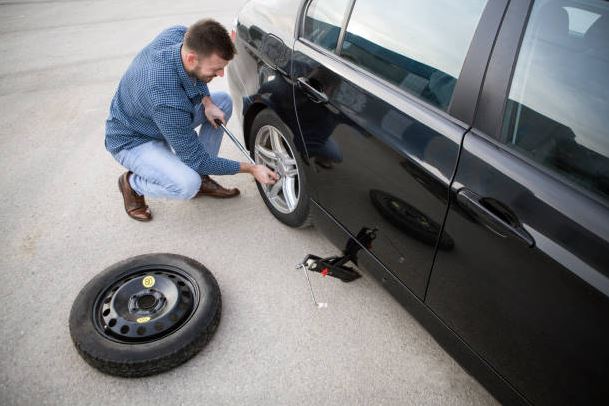Driving on a flat tire is not advisable. Still, in emergencies, when tires suddenly become flat, probably due to road hazards, you may have to drive over short distances to change your tire with a spare or apply quick fixes like sealants to your tire.
So if I were clear with my answers on whether you can drive with a flat tire, my answer would be yes if only you’ll be covering a short distance so you can fix the problem. Below are some guidelines you can follow:
- Drive slowly: At the current state of your tire, it’s dangerous to drive fast since it can lead to an accident and damage some parts of your vehicle. Keep on the slow lane and drive slowly until you reach places like gas stations or a better spot where the tire could be changed appropriately.
- Keep The Vehicle On Smooth and flat ground: It is dangerous at this point to attempt climbing up or down a hilly part or trying to drive on a rough path. If there’s no way you can avoid this path before you reach a safe route, or maybe you are unable to change your tire yourself until you get a professional, then you better call the attention of a tow vehicle service provider.
- Keep To Straight Paths: You should keep on driving straight as much as possible since your vehicle won’t be able to provide support for going through curves.
- Pull over to a safe spot: Your main goal at this stage is to drive to a more convenient location where tires could be replaced with a spare if you can change it yourself. Or you are likely to get assistance if you drive to a gas station where you might be lucky to meet a trained staff to assist you, or maybe to the nearest professional if only it is not too far from you.
How To Tactically Deal With Flat Tires?
These are some actionable steps or measures to take when you have a flat tire.
- Try to make it to a gas station or nearest professional: You should drive into a gas station if there is one nearby, or maybe they are professionals nearby you can visit. One of the critical reasons it is advisable to locate the nearest gas station is because it offers you the necessary convenience to change your punctured or flat to a spare, that is, if you can change it yourself or get help from the experienced staff there in the gas station.
- Keep a spare: Always keep a spare, especially doing your weekly, bi-weekly, or monthly maintenance routine to ensure that all tires, including your spare, are well inflated so you can easily change over to your spare when you have a flat.
- Call a tow truck: When you are far from the nearest gas station or professional who can fix your tire, and you lack the knowhow of changing your tire yourself into a spare, or you are probably without a spare, then you should call a tow truck to get you to the nearest professional.
What Will Happen If You Drive With A Flat Tire?
Driving with a flat tire is dangerous as it can lead to an accident. Since it is easy to lose control while driving on flat tires, an accident can lead to the loss of lives of not only the car’s occupants, but people on the road or may even lead to complete damage to the vehicle.
It can also lead to internal injuries to the car, like the rim especially parts like brake lines, calipers, rotors, wheels, fenders, or suspension components.
So you should always ensure that your tires are in excellent condition, and don’t forget it has a negative toll on your car’s fuel economy.
How To Avoid Driving On A Flat Tire?
While it might be practically impossible to have a flat tire, it is very much avoidable to reduce the likelihood of ever finding oneself in such situations.
- Check Tire Pressure Monthly: It is advisable to check tire pressure regularly, especially during your regular maintenance routine check. In addition, you can narrow your owner’s manual or driver-side door jamb to see the recommended tire pressures from manufacturers. Also, regularly check your TPMS (Tire Pressure Monitoring System) to monitor tire pressure.
- Inspect and Rotate Tire Regularly: When rotating, you should inspect tires closely. For instance, when you notice that the tire’s inner edges are wearing out, that might be a sign that your wheel may not be aligned, or when any sign of leakage is seen, it is time to seek professional advice.
- Don’t Surpass The Tire Load Limit: They are limited to the load every vehicle can support; stick to your manufacturer’s instructions in your owner’s manual by not exceeding these load limits.
- Watch For Road Hazards: Watch out for road hazards by trying as much as possible to avoid running into them or taking alternative roads to get to your destinations.
- Equip Your Vehicles With Run Flat tires: Although you can try as much as possible to avoid running into road hazards, just as no laws are absolute, you should equip your vehicles with run-flat tires. Run flat tires have reinforced sidewalls that help you drive as far as 50 miles until your tires are fixed. In addition, sticking to all the instructions will reduce the likelihood of being stranded.

